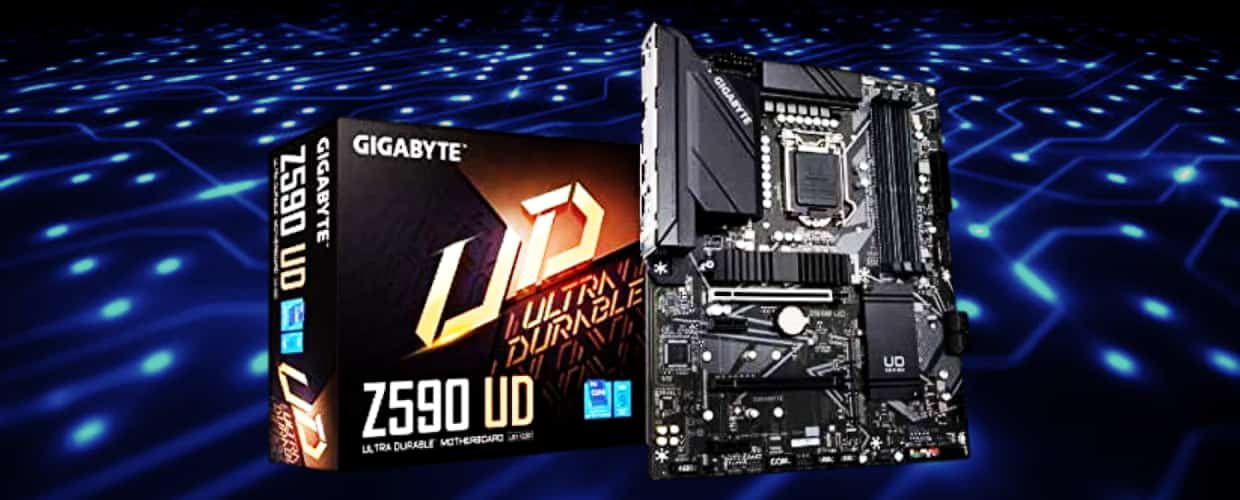Intel Z690 Chipset provides many advanced features and capabilities to enhance system performance and functionality. This article discusses Intel Z690 Chipset, its features, benefits, and limitations.
What is the Intel Z690 Chipset?
The Intel Z690 chipset is a high-end chipset designed for use with Intel’s 12th-generation Core processors. It is the successor to the Z590 chipset and provides advanced features and capabilities designed to enhance system performance and functionality.
The Z690 chipset supports DDR5 memory, PCIe 5.0, Thunderbolt 4, and Intel Optane Memory H20 with SSD, among other features. It also includes integrated Wi-Fi 6E and Intel Iris Xe graphics, providing faster wireless connectivity and improved graphics performance compared to previous generations.
The Z690 chipset is designed for high-end gaming PCs, workstations, and other demanding applications with high performance. It may be more expensive than other chipsets and has some limitations, such as limited compatibility with older processors.
Features on Intel Z690 Chipset
The Intel Z690 chipset is a premium chipset designed for use with Intel’s 12th-generation Core processors; it is also compatible with 13th gen Intel processors. Here are some features of the Intel Z690 chipset.
PCIe 5.0 and Thunderbolt 4
The chipset supports PCIe 5.0, which provides faster data transfer speeds and higher bandwidth. The chipset supports Thunderbolt 4, a high-speed connectivity standard for fast data transfer, video output, and charging capabilities.
DDR5 and Intel Optane Memory Support
The Z690 chipset supports DDR5 memory, providing higher bandwidth and better performance than DDR4. The chipset supports Intel Optane Memory H20 with SSD, a high-speed storage solution that combines Optane memory with QLC NAND flash for faster data access.
Integrated Wi-Fi 6E
The chipset supports integrated Wi-Fi 6E, which provides faster wireless connectivity and improved network performance. Wi-Fi 6E is a new version of the Wi-Fi standard that operates in the 6 GHz frequency band; the 6 GHz band offers significantly more available spectrum, which allows for higher data rates and lower latency.
Intel Iris Xe Graphics and HD Audio
The chipset includes Intel Iris Xe graphics, which improve graphics performance compared to previous generations. The chipset supports Intel’s HD Audio, which provides the high-quality audio output and supports multi-channel audio.
Benefits of Intel Z690 chipset
The Intel Z690 chipset is a high-end chipset that provides advanced capabilities and an excellent user experience. Some benefits of using the Intel Z690 chipset are given below.
Overclocking and Rapid Storage
The Intel Z690 chipset provides advanced overclocking capabilities that allow users to increase the performance of their system beyond the manufacturer’s specifications. The chipset supports Intel Rapid Storage Technology, which provides faster system responsiveness and improved overall performance.
Increased Storage Options
The Z690 chipset supports Intel’s Optane Memory H20 with SSD, providing high-speed storage capabilities and faster system performance. The chipset supports Intel’s Rapid Storage Technology, which provides faster system responsiveness and improved overall performance.
Advanced Security
The chipset provides advanced security features, including Intel’s Hardware Shield, which provides enhanced protection against cyber threats and malware attacks. The security features of the Intel Z690 chipset provide maximum protection to the users.
Easy maintenance
The chipset supports Intel’s Active Management Technology (AMT), allowing IT administrators to remotely monitor and manage PCs, reducing the need for physical maintenance. The chipset supports Intel Performance Maximizer (IPM), which automatically overclocks the system based on its characteristics to provide maximum performance.
Limitations of Intel Z690 chipset
While the Intel Z690 chipset is a high-end chipset with many advanced features, there are some limitations that users should be aware of. Some limitations of the Intel Z690 chipset are given below.
High Cost and Compatibility
The Z690 chipset is premium, and motherboards that support it can be expensive, making it a less accessible option for budget-conscious users. The Z690 chipset is only compatible with Intel’s 12th generation and 13th generation Core processors, limiting users’ options for upgrading their system.
Limited Wi-Fi 6E and PCIe Lanes
Not all motherboards that use the chipset may include integrated Wi-Fi 6E, limiting users’ wireless connectivity options. The Z690 chipset only provides 20 PCIe 5.0 lanes, which may not be enough for users who require multiple high-speed devices.
Power Consumption and High TDP
The Z690 chipset has a higher power consumption than lower-end chipsets, which can impact energy efficiency and battery life. The Z690 chipset has a higher thermal design power (TDP) compared to other chipsets, which can lead to higher power consumption and heat output.
No support for older CPUs
The Z690 chipset is compatible with Intel’s 12th-generation and 13th-generation processors, which means that users with older CPUs, even from Intel, won’t be able to upgrade to the Z690 platform. The Z690 chipset requires a new socket design (LGA 1700), incompatible with older CPUs using different socket designs.
Conclusions
The Intel Z690 chipset is a powerful and advanced chipset that provides many features and capabilities designed to improve system performance and functionality. While the chipset has some limitations, the Intel Z690 chipset is an excellent choice for users who require high-end performance and advanced system features. Its advanced capabilities make it well-suited for demanding gaming, content creation, and virtualization applications.
ADDITIONAL NOTICE: Visit TechGolly.com to stay informed about technology news, discussions, trends, advice, opinions, directories, insights, and markets. TechGolly covers a wide range of the latest technology news, including business news, product news, stock market news, future tech news, and research news.


